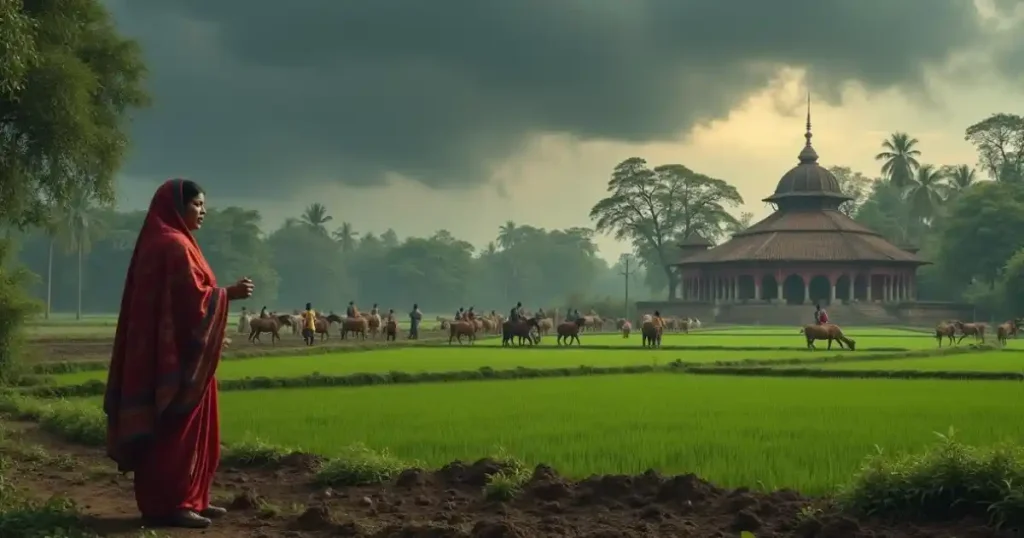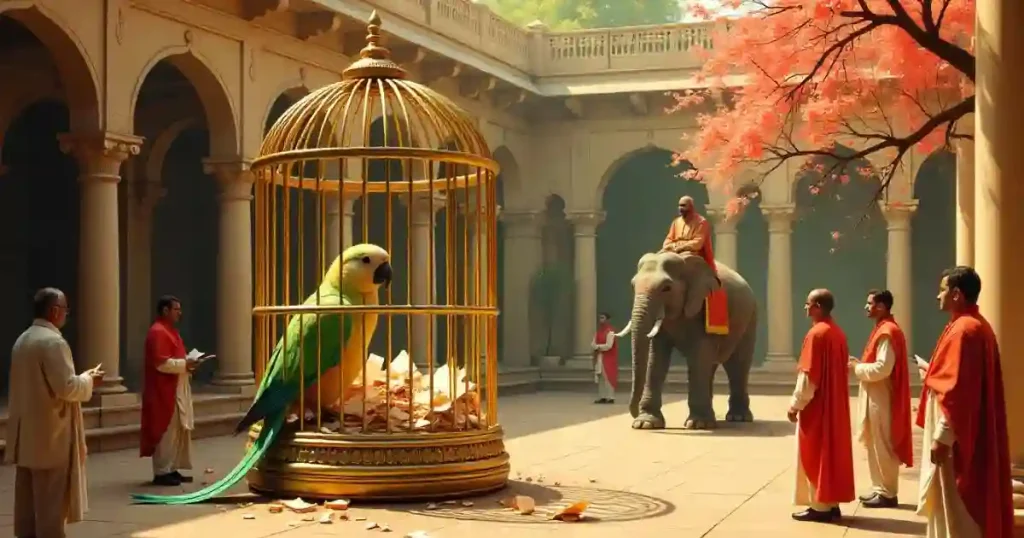Coal mining, often called the backbone of industrial progress, carries a hidden curse that has destroyed countless lives. In Unit 5, Lesson 4 (U5L4), we explore the dark side of coal mining—a world of dangerous working conditions, health hazards, child labour, and the silent suffering of miners and their families.

This lesson reveals the deadly reality behind coal, the so-called black gold, and urges us to rethink the human cost of industrial development.
Read more – Universal Human Rights Explained: Power & Freedom U5L1-3
The passage
Sharing the Earth is a collection of justice-oriented environmental writings. In this lesson, we will read an excerpt from the speech of Lord Ashley which be delivered in 1842. We will read three testimonies collected by Lord Ashley’s commission that investigated a serious accident at Huskar Colliery, Yorkshire in 1838. During his investigation, he interviewed a large number of people working in Britain’s factories and mines.
Through the interviews, inhuman working conditions in the collieries, severe exploitations, and a worrying number of child labourers were revealed. The working conditions of these children were inhumane. Lord Ashley found very young children working as long as eighteen hours a day in mines and collieries, some attached by chains to heavy carts that they had to drag.
Three testimonies gathered by Ashley’s Mines Commission are given below:
Sarah Goodler, Age: 8 years.
“I’m a trapper in the Gawber pit. It does not tire me, but I have a trap without a light and I’m scared. I go at four and sometimes half past three in the morning, and I come out at five and half past. I never go to sleep. Sometimes I sing when I’ve light, but not in the dark; I dare not sing then. I don’t like being in the pit. I am very sleepy when I go sometimes in the morning.”
“I go to Sunday schools and read Reading made Easy.” She knows her letters, and can read little words. They teach me to pray. She repeated the Lord’s Prayer, not very perfectly, and ran on with the following addition: “God bless my father and mother, and sister and brother, uncles and aunts and cousins, and everybody else, and God bless me and make me a good servant. Amen.”I have heard tell of Jesus many a time. I don’t know why he came on earth, I’m sure, and I don’t know why he died, but he had stones for his head to rest on. I would like to be at school far better than in the pit.”
[Trapper: The trapper in the coal mine was often the youngest member of the family working underground. Their job was to open and close the wooden doors (trap doors) that allowed fresh air to flow through the mine. They would usually sit in total darkness for up to twelve hours at a time, waiting to let the coal tub through the deer:]
Isabella Read, Age: 12 years.
I am wrought with sister and brother, it is very sore work; cannot say how many rakes or journeys I make from pit’s bottom to wall face and back, it may about 30 or 25 on average; the distance varies from 100 to 250 fathom (1 fathom = 1.8 meters).
I carry about 1 cwt (equivalent of 50 kg) and a quarter on my back; have to stoop much and creep through water, which is frequently up to the calves of my legs. Once I get down, I frequently fall asleep while waiting for coal from heat and fatigue. I do not like the work, nor do the lassies, but they are made to like it. When the weather is warm there is difficulty in breathing, and frequently the lights go out.
Mary Barrett, Age: 14 years.
I have worked down in pit for five years; my father works in the next pit; I have 12 brothers and sisters-all of them but one live at home; they weave, and wind, and hurry, one of them can read, none of the rest can, or write; they never went to the day-school, but three of them go to Sunday-school; I come down in the pit at seven in the morning, I do not like working in the pit, but I am obliged to get a living: I work always without stockings, or shoes, or trousers; I wear nothing but my chemise, I have to go up and work with the men.
They are all naked there, I have got well used to that, and don’t care much about it now; I was afraid at first, and did not like it; but they never behave rudely to me.
[This passage/content is taken from the National Curriculum and Textbook Board (NCTB), Bangladesh English textbook for educational purposes only.]
© NCTB Bangladesh. All rights reserved to the original publisher.

Read more – Prepositions: Rules, Examples, and Easy Usage Guide
Important Words/Phrases with Bangla Meanings
| Word/Phrase | Bangla Meaning (বাংলা অর্থ) |
| Justice-oriented | ন্যায়বিচারকেন্দ্রিক |
| Excerpt | উদ্ধৃত অংশ |
| Commission | কমিটি / অনুসন্ধান কমিটি |
| Colliery | কয়লা খনি |
| Inhumane | অমানবিক |
| Exploitation | শোষণ |
| Testimony | সাক্ষ্য / বর্ণনা |
| Trapper | খনিতে দরজা খোলার-বন্ধ করার শিশু শ্রমিক |
| Fatigue | অত্যধিক ক্লান্তি |
| Oblige | বাধ্য করা |
| Chemise | পাতলা জামা / অন্তর্বাস |
| Severe | তীব্র / গুরুতর |
| Worrying number | উদ্বেগজনক পরিমাণ |
| Chains | শিকল |
| Drag | টেনে নেওয়া |
| Darkness | অন্ধকার |
| Prayer | প্রার্থনা |
| Perfectly | পুরোপুরি / নিখুঁতভাবে |
| Rake/Journey | খনির এক প্রান্ত থেকে অন্য প্রান্তে যাতায়াত |
| Fathom | গভীরতার মাপ (১ ফ্যাদম = ১.৮ মিটার) |
| cwt (hundredweight) | ওজনের একক (প্রায় ৫০ কেজি) |
| Stooping | ঝুঁকে থাকা |
| Calves | পায়ের পেশি (পায়ের গোড়ালি থেকে হাঁটুর নিচের অংশ) |
| Weave | বুনন কাজ করা |
| Wind | সুতা পাকানো |
| Naked | নগ্ন |
| Obey | মান্য করা / বাধ্য থাকা |
| Servant | চাকর / ভৃত্য |
| Accident | দুর্ঘটনা |
| Investigation | তদন্ত |
| Collieries | কয়লাখনি সমূহ |
Paragraph-wise Bangla Explanation
Paragraph 1 – Lord Ashley’s Investigation
এই অংশে বলা হয়েছে যে Sharing the Earth বইটিতে ন্যায়বিচারকেন্দ্রিক পরিবেশ বিষয়ক লেখা সংকলিত আছে। এর মধ্যে ১৮৪২ সালে লর্ড অ্যাশলির দেওয়া একটি বক্তৃতা থেকে উদ্ধৃতাংশ দেওয়া হয়েছে।
- ১৮৩৮ সালে ইয়র্কশায়ারের হুস্কার কয়লাখনিতে একটি ভয়াবহ দুর্ঘটনা ঘটে। এতে অনেক শিশু প্রাণ হারায়।
- এর তদন্ত করতে গিয়ে লর্ড অ্যাশলি খনি শ্রমিকদের সাথে কথা বলেন এবং শিশু শ্রমের ভয়াবহ চিত্র তুলে ধরেন।
- তিনি দেখেন, মাত্র ৭–৮ বছরের বাচ্চাদেরও দিনে ১৮ ঘণ্টা পর্যন্ত কাজ করতে বাধ্য করা হয়।
- অনেক সময় তাদের ভারী গাড়ি (cart) শিকলে বেঁধে টানতে হতো।
👉 এই অনুচ্ছেদ আমাদের দেখায় যে শিল্প বিপ্লব (Industrial Revolution) একদিকে অর্থনৈতিক উন্নয়ন ঘটালেও, অন্যদিকে শিশুশ্রমকে অমানবিকভাবে শোষণ করেছে।
Paragraph 2 – Testimony of Sarah Goodler (Age 8)
সারাহ মাত্র আট বছরের শিশু। সে “ট্র্যাপার” হিসেবে কাজ করত।
- প্রতিদিন ভোর ৩.৩০–৪টার দিকে খনিতে নামতে হতো এবং সন্ধ্যা ৫টা পর্যন্ত থাকতে হতো।
- তার কাজ ছিল খনির ভেতরে দরজা খোলা ও বন্ধ করা, যাতে তাজা বাতাস ভেতরে প্রবাহিত হতে পারে।
- এই কাজ করতে হতো সম্পূর্ণ অন্ধকারে। আলো না থাকলে সে ভয় পেত এবং গানও গাইতে সাহস করত না।
- রবিবারে সে স্কুলে যেত এবং সামান্য পড়াশোনা শিখেছিল। প্রার্থনা করতে শিখলেও যীশুর আগমন ও মৃত্যুর কারণ জানত না।
- সে স্কুলে পড়তে বেশি আগ্রহী ছিল, কিন্তু দারিদ্র্যের কারণে তাকে খনিতে কাজ করতে বাধ্য করা হয়েছিল।
👉 এই বর্ণনা থেকে বোঝা যায়, শিশুরা শিক্ষা থেকে বঞ্চিত হয়ে শ্রমে বাধ্য হচ্ছিল এবং তাদের শৈশব ভয় ও ক্লান্তিতে ডুবে যাচ্ছিল।
Paragraph 3 – Testimony of Isabella Read (Age 12)
ইসাবেলা বারো বছরের কিশোরী।
- সে প্রতিদিন ২৫–৩০ বার খনির এক প্রান্ত থেকে অন্য প্রান্তে যাতায়াত করত। দূরত্ব ১০০ থেকে ২৫০ ফ্যাদম (১৮০–৪৫০ মিটার) পর্যন্ত হতে পারত।
- তাকে প্রায় ৫০ কেজির মতো বোঝা পিঠে বহন করতে হতো।
- পথের মধ্যে তাকে অনেকটা নিচু হয়ে হাঁটতে হতো এবং হাঁটুর নিচ পর্যন্ত পানির মধ্যে দিয়ে যেতে হতো।
- কাজের ফাঁকে ক্লান্তি ও গরমে সে ঘুমিয়ে পড়ত।
- সে স্বীকার করেছে যে কাজটি তার জন্য কষ্টকর, কিন্তু সমাজ ও খনি মালিকরা তাদের এই শ্রমকে স্বাভাবিক করে তুলেছিল।
👉 এই সাক্ষ্য থেকে আমরা দেখি, শিশুদের শারীরিক সীমার বাইরে শ্রম করানো হচ্ছিল এবং তাদের মানবিক কষ্টকে গুরুত্ব দেওয়া হতো না।
Paragraph 4 – Testimony of Mary Barrett (Age 14)
মেরি ১৪ বছরের কিশোরী, যে পাঁচ বছর ধরে খনিতে কাজ করছে।
- তার পরিবারের ১২ জন ভাইবোন, যাদের মধ্যে প্রায় সবাই জীবিকা অর্জনের জন্য কাজ করে।
- সে প্রতিদিন সকাল ৭টা থেকে খনিতে কাজ শুরু করত।
- তাকে জুতো, মোজা বা ট্রাউজার ছাড়া, শুধু একটি পাতলা জামা (chemise) পরে পুরুষ শ্রমিকদের সাথে কাজ করতে হতো।
- পুরুষরা নগ্ন অবস্থায় কাজ করলেও, তারা মেরির সাথে খারাপ ব্যবহার করত না।
প্রথমে সে ভয় পেয়েছিল, কিন্তু পরে এই অস্বাভাবিক পরিবেশকে অভ্যাসে পরিণত করতে বাধ্য হয়।
👉 এই বর্ণনা আমাদের দেখায়, দারিদ্র্য ও বেঁচে থাকার তাগিদে কিশোরী মেয়েদেরও বিপজ্জনক পরিবেশে কাজ করতে হতো, যেখানে তাদের লজ্জা-সংকোচ বা নিরাপত্তার কোনো সুযোগ ছিল না।

Read more – Coal mining | Definition, History, Types, & Facts
Relevant Historical Event
১৮৩৮ সালে ইয়র্কশায়ারের Huskar Colliery Disaster এ ২৬ শিশু শ্রমিক নিহত হয়েছিল। এই দুর্ঘটনা এবং এর পরবর্তী তদন্ত ব্রিটেনে শিশু শ্রম বিরোধী আইন প্রণয়নের প্রয়োজনীয়তা স্পষ্ট করে তোলে।
Literary Terms
- Testimony (সাক্ষ্য) → এখানে এটি একটি narrative device, যেখানে ভুক্তভোগীর কণ্ঠস্বর ব্যবহার করে পাঠককে আবেগপ্রবণ করা হয়েছে।
- Imagery (চিত্রকল্প) → যেমন ইসাবেলার “পিঠে ৫০ কেজি বোঝা, হাঁটু পর্যন্ত পানিতে হাঁটা” – পাঠকের সামনে বাস্তব কষ্টকে জীবন্ত করে তোলে।
- Pathos (অনুভূতিগত আবেদন) → শিশুদের অমানবিক অবস্থা তুলে ধরে পাঠকের সহানুভূতি জাগানো হয়েছে।
Short Questions (2×5=10)
- Who delivered the speech in 1842 that revealed the inhumane conditions of child labourers?
- What was the duty of a ‘trapper’ in the coal mines?
- At what age did Sarah Goodler work in the Gawber pit, and how long did her working day last?
- How much weight did Isabella Read carry on her back while working in the pit?
- Why did Mary Barrett have to work in the pit despite not liking it?

